Leo Feng
Were RNNs All We Needed?
Oct 02, 2024



Abstract:The scalability limitations of Transformers regarding sequence length have renewed interest in recurrent sequence models that are parallelizable during training. As a result, many novel recurrent architectures, such as S4, Mamba, and Aaren, have been proposed that achieve comparable performance. In this work, we revisit traditional recurrent neural networks (RNNs) from over a decade ago: LSTMs (1997) and GRUs (2014). While these models were slow due to requiring to backpropagate through time (BPTT), we show that by removing their hidden state dependencies from their input, forget, and update gates, LSTMs and GRUs no longer need to BPTT and can be efficiently trained in parallel. Building on this, we introduce minimal versions (minLSTMs and minGRUs) that (1) use significantly fewer parameters than their traditional counterparts and (2) are fully parallelizable during training (175x faster for a sequence of length 512). Lastly, we show that these stripped-down versions of decade-old RNNs match the empirical performance of recent sequence models.
Adaptive teachers for amortized samplers
Oct 02, 2024



Abstract:Amortized inference is the task of training a parametric model, such as a neural network, to approximate a distribution with a given unnormalized density where exact sampling is intractable. When sampling is implemented as a sequential decision-making process, reinforcement learning (RL) methods, such as generative flow networks, can be used to train the sampling policy. Off-policy RL training facilitates the discovery of diverse, high-reward candidates, but existing methods still face challenges in efficient exploration. We propose to use an adaptive training distribution (the Teacher) to guide the training of the primary amortized sampler (the Student) by prioritizing high-loss regions. The Teacher, an auxiliary behavior model, is trained to sample high-error regions of the Student and can generalize across unexplored modes, thereby enhancing mode coverage by providing an efficient training curriculum. We validate the effectiveness of this approach in a synthetic environment designed to present an exploration challenge, two diffusion-based sampling tasks, and four biochemical discovery tasks demonstrating its ability to improve sample efficiency and mode coverage.
Attention as an RNN
May 22, 2024



Abstract:The advent of Transformers marked a significant breakthrough in sequence modelling, providing a highly performant architecture capable of leveraging GPU parallelism. However, Transformers are computationally expensive at inference time, limiting their applications, particularly in low-resource settings (e.g., mobile and embedded devices). Addressing this, we (1) begin by showing that attention can be viewed as a special Recurrent Neural Network (RNN) with the ability to compute its \textit{many-to-one} RNN output efficiently. We then (2) show that popular attention-based models such as Transformers can be viewed as RNN variants. However, unlike traditional RNNs (e.g., LSTMs), these models cannot be updated efficiently with new tokens, an important property in sequence modelling. Tackling this, we (3) introduce a new efficient method of computing attention's \textit{many-to-many} RNN output based on the parallel prefix scan algorithm. Building on the new attention formulation, we (4) introduce \textbf{Aaren}, an attention-based module that can not only (i) be trained in parallel (like Transformers) but also (ii) be updated efficiently with new tokens, requiring only constant memory for inferences (like traditional RNNs). Empirically, we show Aarens achieve comparable performance to Transformers on $38$ datasets spread across four popular sequential problem settings: reinforcement learning, event forecasting, time series classification, and time series forecasting tasks while being more time and memory-efficient.
Generative Active Learning for the Search of Small-molecule Protein Binders
May 02, 2024



Abstract:Despite substantial progress in machine learning for scientific discovery in recent years, truly de novo design of small molecules which exhibit a property of interest remains a significant challenge. We introduce LambdaZero, a generative active learning approach to search for synthesizable molecules. Powered by deep reinforcement learning, LambdaZero learns to search over the vast space of molecules to discover candidates with a desired property. We apply LambdaZero with molecular docking to design novel small molecules that inhibit the enzyme soluble Epoxide Hydrolase 2 (sEH), while enforcing constraints on synthesizability and drug-likeliness. LambdaZero provides an exponential speedup in terms of the number of calls to the expensive molecular docking oracle, and LambdaZero de novo designed molecules reach docking scores that would otherwise require the virtual screening of a hundred billion molecules. Importantly, LambdaZero discovers novel scaffolds of synthesizable, drug-like inhibitors for sEH. In in vitro experimental validation, a series of ligands from a generated quinazoline-based scaffold were synthesized, and the lead inhibitor N-(4,6-di(pyrrolidin-1-yl)quinazolin-2-yl)-N-methylbenzamide (UM0152893) displayed sub-micromolar enzyme inhibition of sEH.
Tree Cross Attention
Sep 29, 2023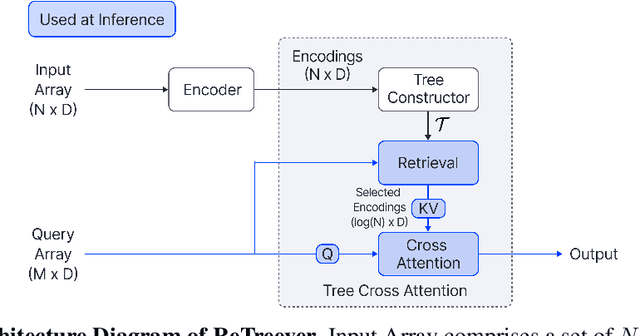
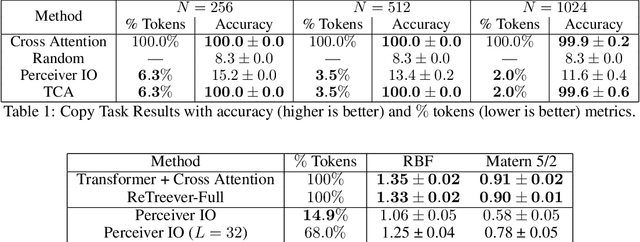
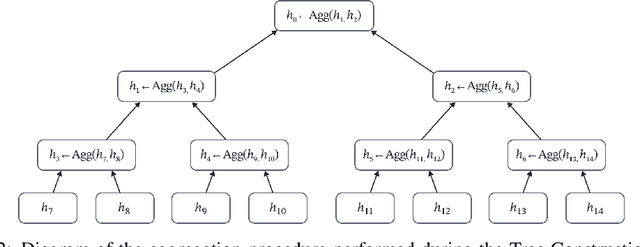

Abstract:Cross Attention is a popular method for retrieving information from a set of context tokens for making predictions. At inference time, for each prediction, Cross Attention scans the full set of $\mathcal{O}(N)$ tokens. In practice, however, often only a small subset of tokens are required for good performance. Methods such as Perceiver IO are cheap at inference as they distill the information to a smaller-sized set of latent tokens $L < N$ on which cross attention is then applied, resulting in only $\mathcal{O}(L)$ complexity. However, in practice, as the number of input tokens and the amount of information to distill increases, the number of latent tokens needed also increases significantly. In this work, we propose Tree Cross Attention (TCA) - a module based on Cross Attention that only retrieves information from a logarithmic $\mathcal{O}(\log(N))$ number of tokens for performing inference. TCA organizes the data in a tree structure and performs a tree search at inference time to retrieve the relevant tokens for prediction. Leveraging TCA, we introduce ReTreever, a flexible architecture for token-efficient inference. We show empirically that Tree Cross Attention (TCA) performs comparable to Cross Attention across various classification and uncertainty regression tasks while being significantly more token-efficient. Furthermore, we compare ReTreever against Perceiver IO, showing significant gains while using the same number of tokens for inference.
Constant Memory Attention Block
Jun 21, 2023
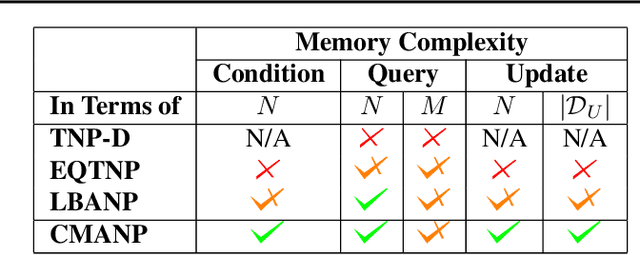
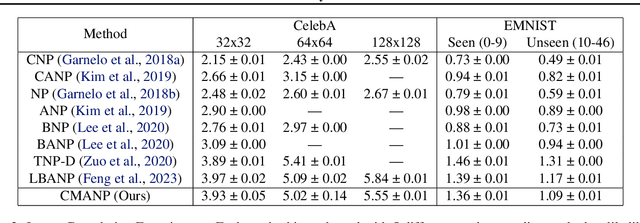

Abstract:Modern foundation model architectures rely on attention mechanisms to effectively capture context. However, these methods require linear or quadratic memory in terms of the number of inputs/datapoints, limiting their applicability in low-compute domains. In this work, we propose Constant Memory Attention Block (CMAB), a novel general-purpose attention block that computes its output in constant memory and performs updates in constant computation. Highlighting CMABs efficacy, we introduce methods for Neural Processes and Temporal Point Processes. Empirically, we show our proposed methods achieve results competitive with state-of-the-art while being significantly more memory efficient.
Constant Memory Attentive Neural Processes
May 23, 2023



Abstract:Neural Processes (NPs) are efficient methods for estimating predictive uncertainties. NPs comprise of a conditioning phase where a context dataset is encoded, a querying phase where the model makes predictions using the context dataset encoding, and an updating phase where the model updates its encoding with newly received datapoints. However, state-of-the-art methods require additional memory which scales linearly or quadratically with the size of the dataset, limiting their applications, particularly in low-resource settings. In this work, we propose Constant Memory Attentive Neural Processes (CMANPs), an NP variant which only requires constant memory for the conditioning, querying, and updating phases. In building CMANPs, we propose Constant Memory Attention Block (CMAB), a novel general-purpose attention block that can compute its output in constant memory and perform updates in constant computation. Empirically, we show CMANPs achieve state-of-the-art results on meta-regression and image completion tasks while being (1) significantly more memory efficient than prior methods and (2) more scalable to harder settings.
Latent Bottlenecked Attentive Neural Processes
Nov 15, 2022Abstract:Neural Processes (NPs) are popular methods in meta-learning that can estimate predictive uncertainty on target datapoints by conditioning on a context dataset. Previous state-of-the-art method Transformer Neural Processes (TNPs) achieve strong performance but require quadratic computation with respect to the number of context datapoints, significantly limiting its scalability. Conversely, existing sub-quadratic NP variants perform significantly worse than that of TNPs. Tackling this issue, we propose Latent Bottlenecked Attentive Neural Processes (LBANPs), a new computationally efficient sub-quadratic NP variant, that has a querying computational complexity independent of the number of context datapoints. The model encodes the context dataset into a constant number of latent vectors on which self-attention is performed. When making predictions, the model retrieves higher-order information from the context dataset via multiple cross-attention mechanisms on the latent vectors. We empirically show that LBANPs achieve results competitive with the state-of-the-art on meta-regression, image completion, and contextual multi-armed bandits. We demonstrate that LBANPs can trade-off the computational cost and performance according to the number of latent vectors. Finally, we show LBANPs can scale beyond existing attention-based NP variants to larger dataset settings.
Designing Biological Sequences via Meta-Reinforcement Learning and Bayesian Optimization
Sep 13, 2022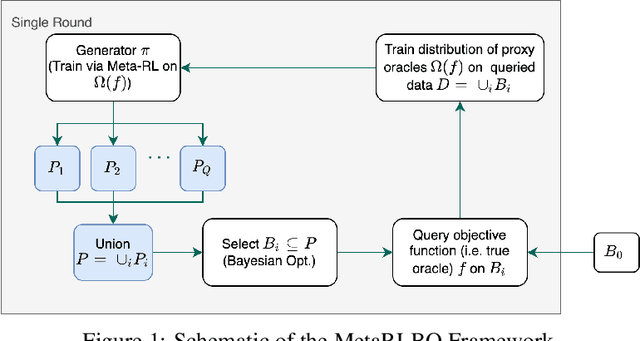



Abstract:The ability to accelerate the design of biological sequences can have a substantial impact on the progress of the medical field. The problem can be framed as a global optimization problem where the objective is an expensive black-box function such that we can query large batches restricted with a limitation of a low number of rounds. Bayesian Optimization is a principled method for tackling this problem. However, the astronomically large state space of biological sequences renders brute-force iterating over all possible sequences infeasible. In this paper, we propose MetaRLBO where we train an autoregressive generative model via Meta-Reinforcement Learning to propose promising sequences for selection via Bayesian Optimization. We pose this problem as that of finding an optimal policy over a distribution of MDPs induced by sampling subsets of the data acquired in the previous rounds. Our in-silico experiments show that meta-learning over such ensembles provides robustness against reward misspecification and achieves competitive results compared to existing strong baselines.
Stop Overcomplicating Selective Classification: Use Max-Logit
Jun 17, 2022

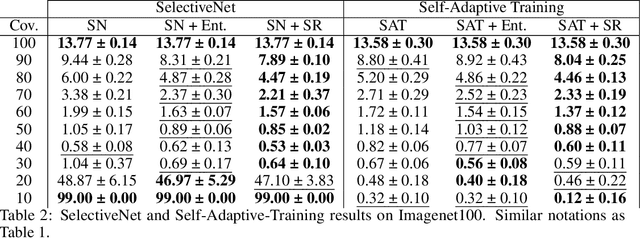

Abstract:We tackle the problem of Selective Classification where the goal is to achieve the best performance on the desired coverages of the dataset. Recent state-of-the-art selective methods come with architectural changes either via introducing a separate selection head or an extra abstention logit. In this paper, we present surprising results for Selective Classification by confirming that the superior performance of state-of-the-art methods is owed to training a more generalizable classifier; however, their selection mechanism is suboptimal. We argue that the selection mechanism should be rooted in the objective function instead of a separately calculated score. Accordingly, in this paper, we motivate an alternative selection strategy that is based on the cross entropy loss for the classification settings, namely, max of the logits. Our proposed selection strategy achieves better results by a significant margin, consistently, across all coverages and all datasets, without any additional computation. Finally, inspired by our superior selection mechanism, we propose to further regularize the objective function with entropy-minimization. Our proposed max-logit selection with the modified loss function achieves new state-of-the-art results for Selective Classification.
 Add to Chrome
Add to Chrome Add to Firefox
Add to Firefox Add to Edge
Add to Edge